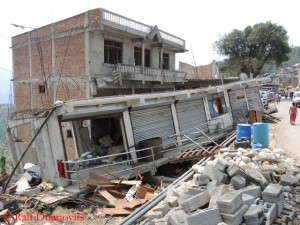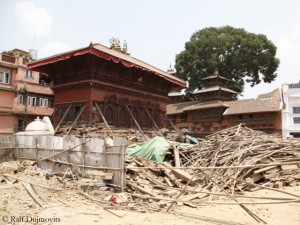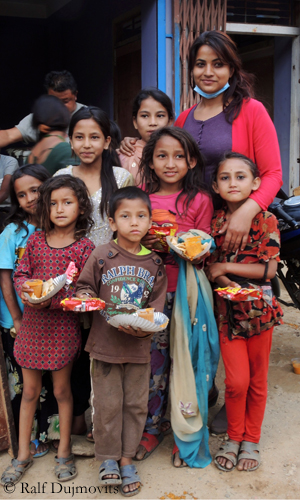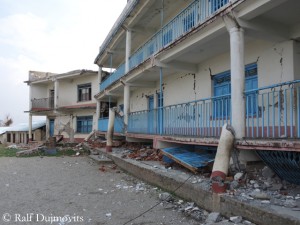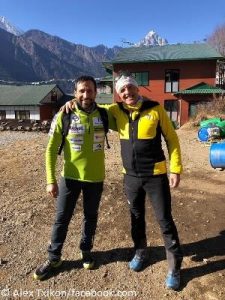Ghostly silence where once was hubbub
Ralf Dujmovits is shocked. “I have rarely seen something so depressing and sad”, says Germany’s most successful high altitude mountaineer when he calls me from Kathmandu. He has just returned from an all-day trip to Sindhupalchowk District, about 80 kilometers northeast of the capital. There was no other district in Nepal where the devastating earthquake two weeks ago killed more people than in Sindhupalchowk. So far, the government has registered there more than 3,000 dead – at a total of more than 7,900 fatalities throughout Nepal.
Almost back to normal in Kathmandu
Originally, Ralf had wanted to climb Mount Everest from the north side this spring, without bottled oxygen, in a team with the Canadian Nancy Hansen. But then they had to abandon their expedition, like all other Everest aspirants in Tibet. The 53-year-old and his team partner flew to Kathmandu to get an impression of the earthquake damage. The life in the capital has almost gone back to normal, Ralf reports, “except that there are hardly any tourists”. Many temples in the city centre are heavily damaged, says Dujmovits. “A sad silence lies over Durbar Square, dust is in the air, and everywhere piles of rubble.” Nevertheless, Ralf is convinced that “Kathmandu will soon be out of the headlines. But in the countryside, it is quite different.”
Smell of death
Ralf and Nancy joined a team of doctors and nurses from the Siddhi Memorial Hospital in Bakhtapur and helpers of the German aid agency “Nepalhilfe Beilngries”. Every other day, the hospital has been sending such teams to the countryside, to treat injured and to distribute aid supplies. “It was really shocking. You are driving from one village to the next, and all of them are destroyed. I estimate 85 to 95 percent of the houses are razed to the ground”, says Ralf, struggling to maintain his composure. “It looks devastating. We just stood there, speechless. Sad, so sad.”
The young doctor Sabina Parajuli led the team on this day. As a child she had lived in the village of Sangachok and had gone to a school that was funded by the “Nepalhilfe Beilngries”. “Sabina and the other doctors treated 300 people in Sangachok today. The earthquake has killed 200 people in her home village. That’s incredibly hard”, says Ralf. “Sometimes there is a pungent smell, because a lot of dead people and animals could still not be recovered from the rubble.”
Only a pile of junk
The people in the destroyed villages are traumatized: “Where once was hubbub, is now ghostly silence. The people are standing around staring at the ruins of their homes. They do not even know where to start to clean up.” Out of the schools of the “Nepalhilfe Beilngries” that he had co-financed, only the school in the village of Irkhu has “miraculously” remained largely intact, says Ralf. The local police are now using the building as a quarter. “All other schools were heavily damaged or destroyed. The ground floor of the large school in Thulosirubari, which Gerlinde (Kaltenbrunner) and I had opened in 2009, collapsed. The upper floors sagged. What once was a school for 700 children is now just a pile of junk.” Probably the school has to be demolished completely. Actually, Nancy and he thought they could help, says Ralf. “But a shovel is not enough, you need heavy equipment. Nepal will be dependent on foreign help for years.”



